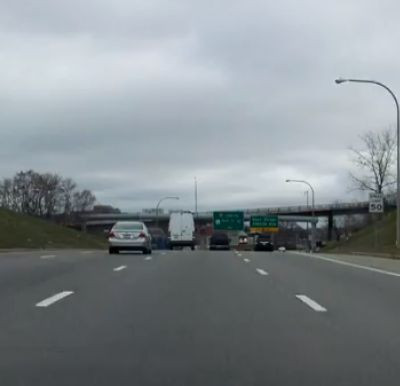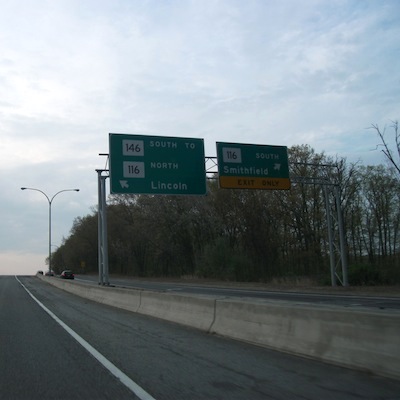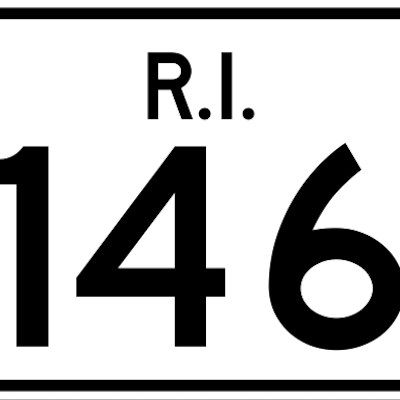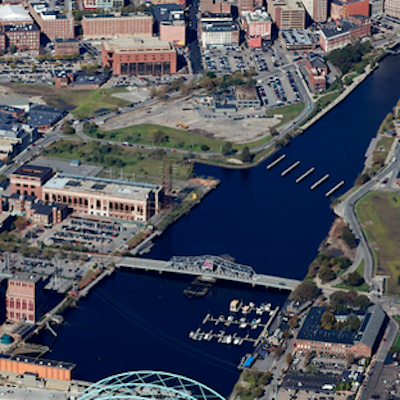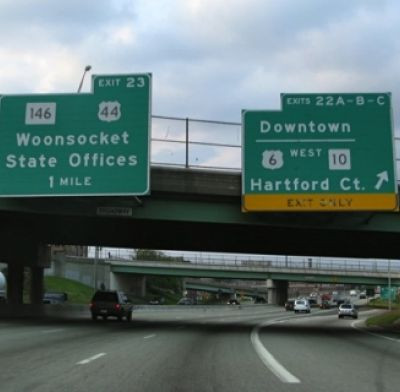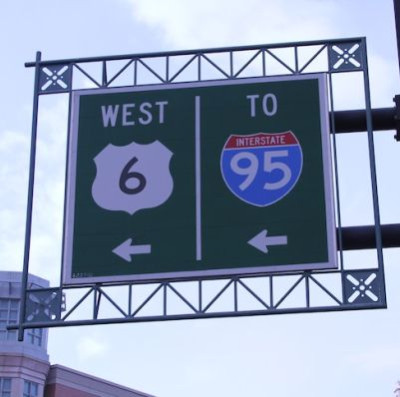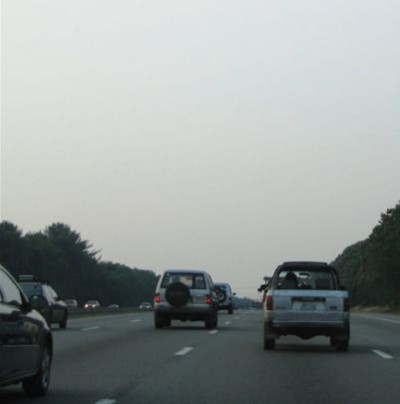Just 9 Percent of RI Stimulus Funds Went to Roads, Bridges
Monday, June 29, 2015
The biggest political and policy issue this year is Governor Gina Raimondo's near billion program to fund road and bridge repair. The Governor repeatedly raises the issue of the lack of funding, but what happened to the hundreds of millions in federal stimulus designed to help all the state's fix infrastructure and put people to work after the Great Recession?
While the debate centers on whether or not the truck tolling plan is prudent, nobody denies the fact that the state’s roads and bridges are crumbling. GoLocalProv recently reported that more than half of the state’s bridges are deficient in some way.
“While deteriorating roads and bridges is a problem nationwide, Rhode Island ranks last for the overall condition of our bridges,” Raimondo said during a recent press conference.
GET THE LATEST BREAKING NEWS HERE -- SIGN UP FOR GOLOCAL FREE DAILY EBLASTWhat Happened to the Stimulus?
Yet that fact has led many talking heads and casual political observers alike wondering why, after the enactment of The American Recovery and Reinvestment Act in 2009, otherwise known as “the Obama stimulus package” that saw almost $787 billion spent on a national level with just under $1.1 billion sent to Rhode Island, the state still has roads and bridges that can only be described as woeful.
The answer is probably as frustrating as it is simple: it’s because a relatively small amount of money was actually allocated to roads and bridges. According to a GoLocalProv review of federal data on the American Recovery and Reinvestment Act stimulus spending, just under 9 percent ($95,493,854) of the $1.096 billion that Rhode Island received was given to the Rhode Department of Transportation and used to fix the state’s crumbling roads and bridges.
So how is this possible? Well, although the average person may think of stimulus funding in terms of hardhat wearing men building and repairing roads, bridges, and other sorts of infrastructure—that’s not exactly how the American Recovery and Reinvestment Act was actually envisioned. Obama’s stimulus package was every bit as much about investing in education and stabilizing state government’s than it was about repairing roads and bridges nationwide.
“Anybody who's observed Rhode Island government and politics should not be surprised that "stimulus" funds didn't actually go toward infrastructure,” said Justin Katz, the Research of the Rhode Island Center for Freedom and Prosperity, a think tank located in Rhode Island. “Federal stimulus under President Obama wasn't about boosting the economy or improving infrastructure. It was about insulating government at every level from the effects of the recession, particularly for the benefit of organized labor, and about seeding the field for progressive activists.”
Spent on other needs
Katz pointed out that more often than not, the stimulus money was, creatively in some cases, used to supplant losses in revenue during the economic downtown for things like education as well as general government services.
The data seems to support his take on the issue. Just seven bridges in Rhode Island were repaired with stimulus finding. And portions of about 30 roads were resurfaced with stimulus funds. (See chart)
Instead, the stimulus was spent in other areas.
Large portions of the federal stimulus spending were, in fact, used to balance the state budget during the 2010 fiscal year, commonly referred to as stabilization funding, according to a state report. The state used $164.5 million alone in 2010 to help offset what would’ve been cuts to primarily education, but also other general government services.
Many other categories
Further, the federal stimulus package wasn’t used solely for the purpose of improving transportation—despite the fact that, in retrospect, that’s what Rhode Island needed the most. Instead, there were 11 other categories of spending which the state invested in as a result of the stimulus package. The area the state spent the most money on was education. The state spent $340.4 million on improving education.
Other areas, besides transportation, that saw stimulus spending were infrastructure, health, research and development/science, energy and environment, housing, job training, unemployment, public safety, and family. (See chart)
And even though roughly $207 million was given to the state to fund transportation, more than half of that money, wasn’t used to fix roads or bridges. For instance, $22.3 million of that funding was used to construct multi-modal transportation infrastructure at the Port of Davisville in North Kingstown. Another $26.2 million was spent to construct a third rail of train tracks at the West Kingston train lines.
Much smaller portions, which add up quickly, were spent on issues like drainage, traffic signals, sidewalks and curbing, equipment for shipyards, radar detectors, “streetscapes”, and other items that improve transportation, but not the actual condition of the state’s roads and bridges.
Nothing Spent On Most Deficient Bridges
Further, the data doesn’t show that any of what are considered the state’s most traveled and deficient bridges were repaired by federal stimulus funding.
(Representatives from the DOT didn’t respond to requests for comment.)
Contacted on Thursday morning, Congressman James Langevin’s spokeswoman made it seem as if he prefers to look forward in addressing the state’s transportation issues as opposed to pondering whether fixing RI’s roads and bridges should’ve been more of a priority in the American Recovery and Reinvestment Act.
“Rhode Island has tremendous infrastructure needs, and the Congressman will continue to fight to bring federal funds into the state for road and bride improvements,” said Meg Geoghegan. “It will take strong investment from the federal and state level to move forward and prioritize infrastructure improvements, and he believes Rhode Island officials recognize the seriousness and immediacy of this challenge.”
Langevin voted for the stimulus package in 2009.
Poorly Prioritized Spending?
The amount of money state leaders like Governor Raimondo say it will cost to fix our roads and bridges is pegged at roughly $1.2 billion—the same amount that Rhode Island was appropriated in stimulus funding in from 2009 up until 2013 (the state received slightly under $1.1 billion in actual funding.) That fact is not lost on some Rhode Island taxpayer advocates.
“It is more than a little ironic that the amount of the federal stimulus funds [appropriated] to Rhode Island several years ago was [$1.1 billion] – (almost) the exact amount that Governor Raimondo's administration proposes to spend on a destructive, highly wasteful toll and bond scheme to fund infrastructure repairs,” said Monique Chartier, the spokeswoman from the RI Taxpayers Association, which as the name implies, advocates on behalf of taxpayers. “The current condition of Rhode Island's roads and bridges are the result of decades of poor budget priorities by state officials and the General Assembly. Now we can unfortunately add to that total the quizzical spending of another [$1.1 billion] in federal funds.”
Related Slideshow: RI’s Most Dangerous Bridges
The American Road and Transportation Builders Association recently released a list of the most traveled, deficient bridges in each state. In Rhode Island, those bridges were:
Related Articles
- Moore: Call on Mattiello to Pass Ethics Bill
- Moore: Elorza’s Budget is a Bridge To Nowhere
- Moore: Mattiello Must Leave Pawsox Fate Up To Voters
- Moore: A Preposterous PawSox Proposal
- Russell Moore: Fear and Loathing - RI Style
- Moore: Chafee’s Brilliant Decision
- Moore: Elorza Should Prioritize Students, Not Trolleys
- Moore: Will Magaziner Protect Rhode Island or Wall St.?
- Moore: Elorza Must Pursue Pension Reform
- Moore: RI Republicans Forfeit Credibility
- Moore: Ask Not Who the Toll is For; It’s For You
- Moore: Elorza Shows Bravery by Taking on Firefighters
- Moore: Is Platoon Reduction a Ploy to Elminate Firefighters?
- Most Traveled, Deficient Bridges in RI - See The List
- RI Has Highest Percentage of Deficient Bridges in Country
- The Most Dangerous Bridges in RI
- Rhode Island’s Most Dangerous Bridges
- James Clayton Sattel’s RI Views: Bridges + Lighthouses
- State Report: Repairing RI’s Bridges, $40 Million Bonds & Improving Schools
- NEW: RIDOT Awarded $760,000 to Encourage Business Development and Improve Bridges
- NEW: RITBA Votes to Delay Toll Increases on Pell, Sakonnet Bridges
- Seat Belts on School Busses & a Plan for Highways & Bridges: This Week at the State House






